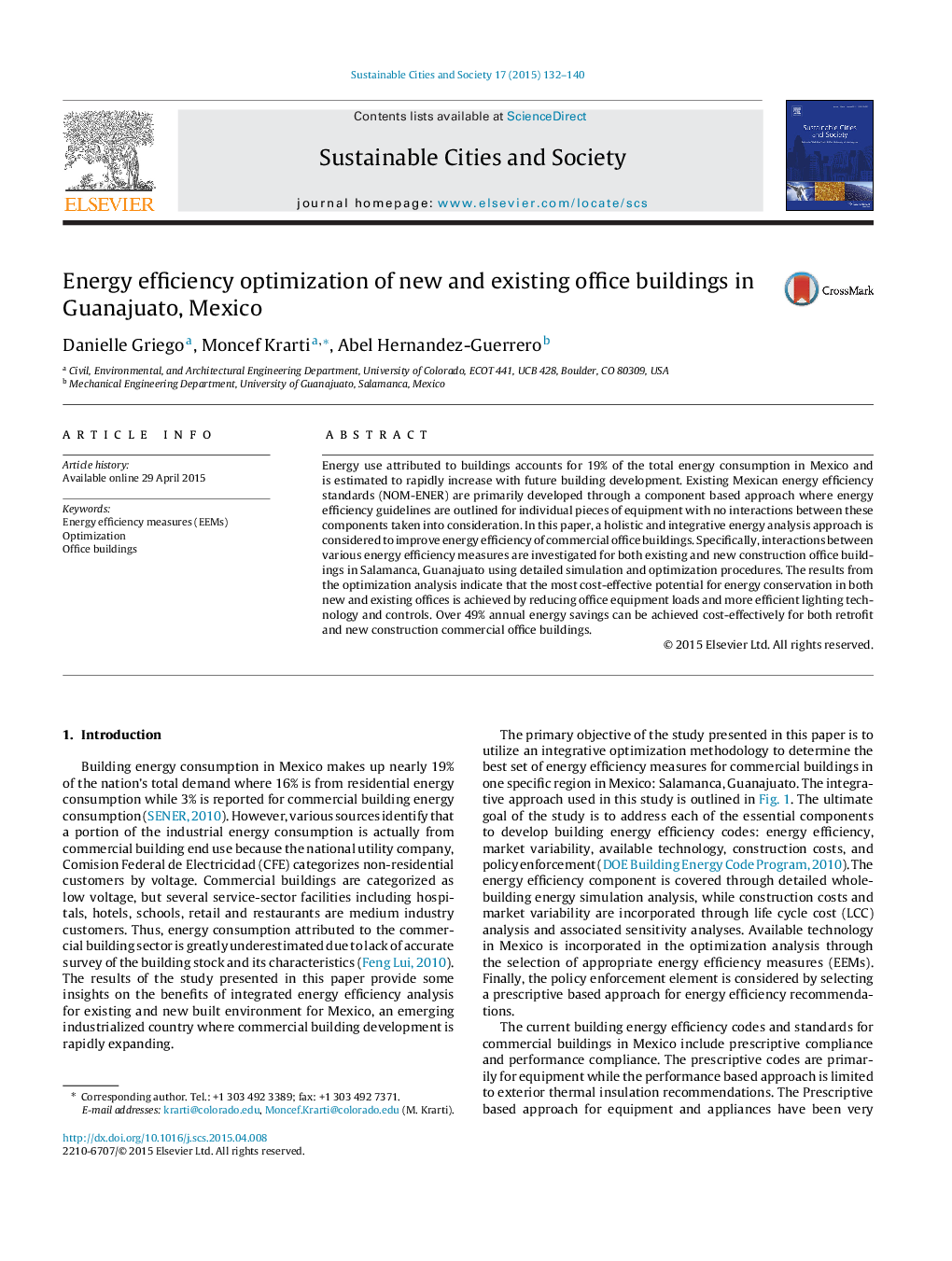| Article ID | Journal | Published Year | Pages | File Type |
|---|---|---|---|---|
| 6776386 | Sustainable Cities and Society | 2015 | 9 Pages |
Abstract
Energy use attributed to buildings accounts for 19% of the total energy consumption in Mexico and is estimated to rapidly increase with future building development. Existing Mexican energy efficiency standards (NOM-ENER) are primarily developed through a component based approach where energy efficiency guidelines are outlined for individual pieces of equipment with no interactions between these components taken into consideration. In this paper, a holistic and integrative energy analysis approach is considered to improve energy efficiency of commercial office buildings. Specifically, interactions between various energy efficiency measures are investigated for both existing and new construction office buildings in Salamanca, Guanajuato using detailed simulation and optimization procedures. The results from the optimization analysis indicate that the most cost-effective potential for energy conservation in both new and existing offices is achieved by reducing office equipment loads and more efficient lighting technology and controls. Over 49% annual energy savings can be achieved cost-effectively for both retrofit and new construction commercial office buildings.
Keywords
Related Topics
Physical Sciences and Engineering
Energy
Renewable Energy, Sustainability and the Environment
Authors
Danielle Griego, Moncef Krarti, Abel Hernandez-Guerrero,
